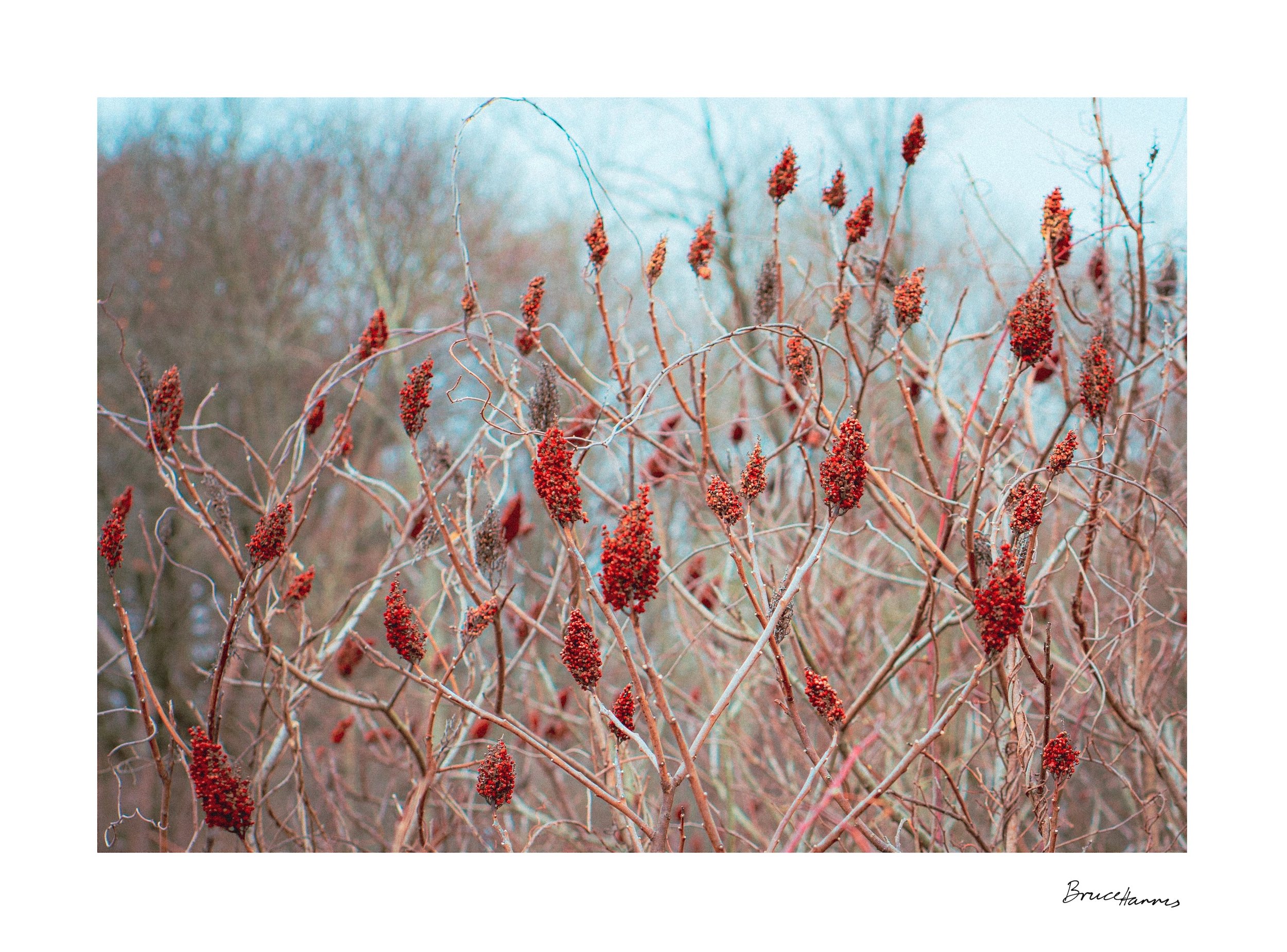Sustenance
Sustenance (see in Gallery / Store)| Image by Bruce Harris
Sumac. Red food for bluebirds. And robins. And the starlings that burst from the brush before my careful step even hits the trail. Rabbits and deer are known to enjoy the berries and twigs and the few leaves that hang stubbornly into winter. The image is of a small grove that caught my eye, its red bobs contrasting with the prairie grass readying for snow.
Native American tribes, primarily the Potawatomi, had been in the area of this preserve for some five hundred years prior to the Treaty of Chicago in 1833. The tribe, along with the Ottawa and Chippewa, had ancestral ties to the Great Lakes regions spanning not hundreds but thousands of years.
Try to imagine what thousands of years of human life actually is. Then the local tribes ceded their land to the United States government and were forcibly moved west. Moved from Lake Michigan and all the resources its vast waters provided. The fish. The forests. The wetlands. The cultural connections. The spiritual roots, generations deep, spread as wide as the sumac and prairie grass, the maples and oaks. Only to be torn from the everyday beauty of Lake Michigan’s winking waters and undulating shores.
What a surreal nightmare to live through. Every person you’ve ever known and every person they have ever known only knew this way of life. Until the exact day when tomorrow became unknown and yesterday became never again.
Imagine the levels of stewardship and expertise the tribes had living within the eternal cycles of this land. Or what they thought to be eternal. All the specific nutrients and medicines that were learned and developed over epochal time. And then they were forced into a new ecosystem with unfamiliar cycles and rhythms, and I’m sure, new humans that were quick to define and defend borders and customs and ways, so sure of what they knew to be true, that harm’s way was the only way.
Sumac was used for traditional medicine. Loaded with antioxidants, it was used for fever-reducing teas, digestive healing, respiratory cures, and even boiled into a solution for a poultice to treat skin wounds. And it was winter food for several animals that received its nutrients and spread its seeds.
All I do is walk by it.
Maybe take a picture.
Ask a simple question into the electronic space gripped in my palm; what is this?
